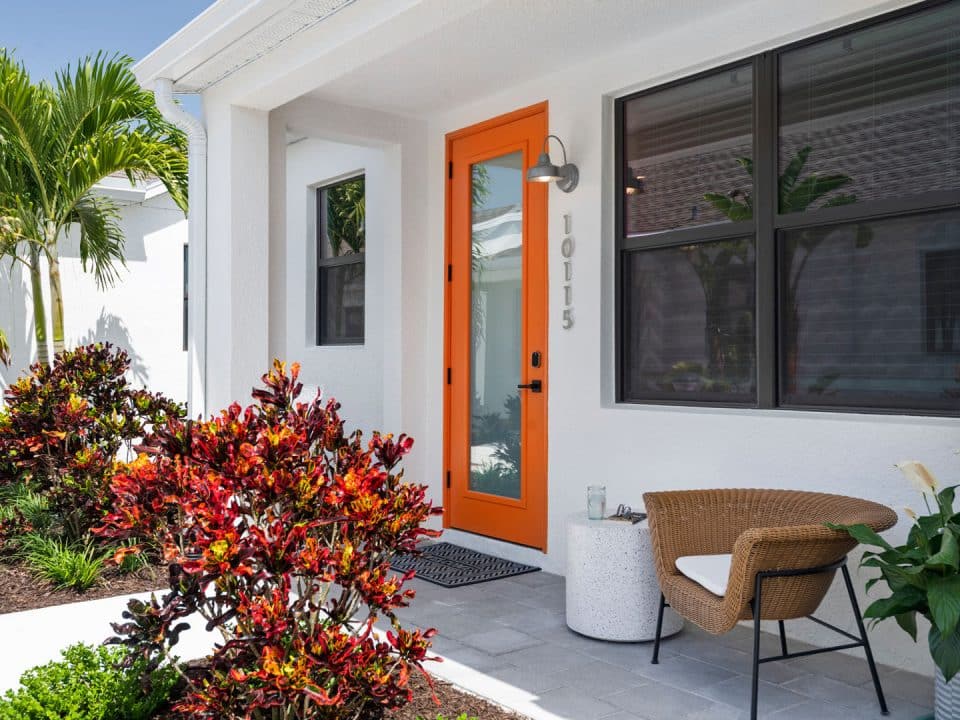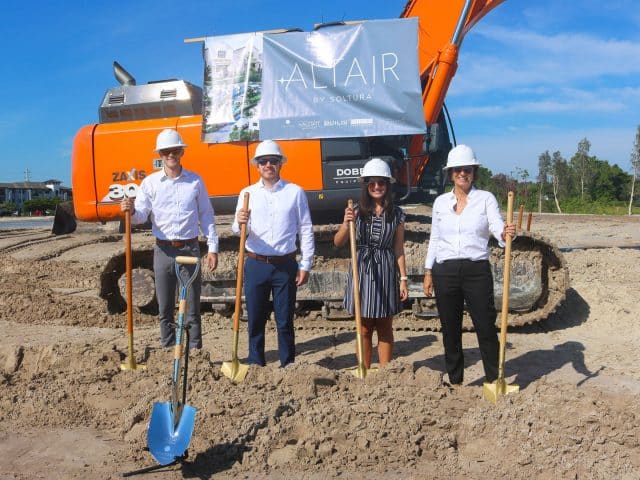
Going Horizontal in Southwest Florida
On May 8, 1923, the Florida Legislature created Collier County in honor of Barron Gift Collier Sr., who had amassed over 1 million acres in Southwest Florida and funded the construction of the Tamiami Trail to connect Tampa with Miami.
Now 100 years later, his great granddaughter, Katie Sproul, is quietly carving her own path in a relatively new subsector of Florida’s real estate business — developing communities of detached rental homes with a twist: They’re managed like apartments.
It’s such a new class of real estate that the industry can’t agree on a name. Some call it build-to-rent, others build-for-rent, and still others horizontal apartments because they’re essentially multifamily apartment complexes turned on their side. Whatever you call it, Sproul, CEO of Naples-based Halstatt LLC, and her partners are moving quickly to satisfy the demand of people who can’t afford a down payment on a house, don’t want the hassle of ownership or are just weary of the noisy next-door neighbors.
Last summer, Halstatt teamed with new homebuilder Soltura Development Group to open Odyssey, 129 closely spaced cottage-style homes in Fort Myers. The private investment firm Halstatt Real Estate Partners provided equity for the project. The units have 10-foot ceilings, plenty of windows, fenced-in backyards, and luxury finishes like high-end kitchen counters and stainless-steel appliances. As of April, the project was 95% leased at rental rates 10% to 20% higher than the comparable class of apartments in the market, said Steve Iannaccone, who along with Sproul is a principal in the Halstatt private equity fund. Monthly rents start at roughly $2,200 for a one-bedroom unit, $2,800 for two bedrooms and $3,100 for three. By and large they’ve attracted relatively affluent renters from a wide demographic, including Baby Boomers and millennials with young children and pet dogs. Some renters were displaced by Hurricane Ian, which pummeled the Fort Myers area last fall.
“We’re an early mover for sure, especially in Southwest Florida,” said Sproul, who also serves as a member of the UF Bergstrom Real Estate Center’s executive committee. “We really believe in this sector and there’s also obviously the growth story associated with Florida.”
Buoyed by the early success, Halstatt attracted institutional investors, foundations, endowments, pension funds and family offices to invest in a new equity fund to bankroll seven more communities with another 1,505 units, mostly in Southwest Florida: North Port, Tampa, Bonita Springs and two more in Fort Myers. It’s also funding projects in Austin and Columbus, Ohio.

By most accounts, the U.S. build-to-rent market was pioneered by entrepreneurs who started constructing detached single-family apartments in Tucson, Arizona in the wake of the Great Recession. They figured they’d attract renters with bad credit. Instead, they found people with good credit who chose to rent, said Jacque Petroulakis, executive vice president of the firm now known as NexMetro Communities. NexMetro has gone on to build about 5,000 homes in over two dozen communities mostly in the Sunbelt; last year it opened its first Florida project in Odessa. The business is much different than the buy-to-rent market that mushroomed amid the real estate bust when institutional investors like Blackstone acquired tens of thousands of existing homes scattered in suburban markets. In contrast, build-to-rent homes are purpose-built in a contiguous community and run like an apartment complex, with on-site property management, and shared amenities such as a swimming pool and clubhouse.
Similar developments have popped up across the country, and demand began to surge in 2020 during the height of the COVID pandemic when people increasingly relocated to gain more space or work from home, industry observers said. In the fourth quarter 2022, single-family built-to-rent starts reached 17,000, up 6% from a year earlier, according to the National Association of Home Builders. Florida real estate has been a big beneficiary. The Sunshine State, ranked by the U.S. Census Bureau as the nation’s fastest-growing state in 2022, also was among the fastest growing in the build-to-rent category with roughly 10,000 completed units, estimated Oliver Radvin, senior vice president with John Burns Research and Consulting.
Seizing an opportunity in Fort Myers
Danville Leadbetter, co-owner of Soltura, one of two of Halstatt’s development partners, accidentally stumbled on the emerging market in 2019.
Leadbetter and his partner Arron Simon toured a NexMetro community north of Dallas. “I immediately started to pinch myself and said, ‘How is this not already in Florida?’” Leadbetter and Simon formed Soltura to enter the build-to-rent market and hunted for suitable land and potential investors to finance it. Buying the right property at the right price is essential to make any deal pay off. Apartment builders can pay more for the same land, Leadbetter explained, because 10 to 12 detached units can fit on an acre compared with roughly 16 for a traditional three-story apartment complex. “But our premiums in rent make up for the lower density,” he said, “assuming we can get into the land to begin with.” In early 2021, the developers paid $650,000 for a skinny 12-acre parcel in the Forum, a master-planned community in Fort Myers. Because of its odd shape, the land was unsuitable for an apartment complex, but ideal for detached apartment units.
Next, they had to sell the project not only to investors but Fort Myers building officials, who had never seen anything like it. While the parcel was zoned for multifamily and platted as one tax parcel, it’d be developed like a miniature planned community of detached homes, which could require higher impact fees and push up costs, Leadbetter said. In a meeting with the city planning and building officials, including the fire chief, they agreed to treat the overall project as an apartment complex, which meant smaller perimeter areas, setbacks and a drive aisle instead of a typical 50-foot-wide road with utility easements on both sides. But they’d permit the individual units like single-family homes, so they’d need not meet stricter multifamily fire codes.
The next hurdle was funding. Nothing could move ahead without tens of millions of dollars of equity and debt financing, and large investment firms were reluctant to back a first-time sponsor in a sector they weren’t familiar, Leadbetter said.
Meanwhile, Halstatt, which had successfully invested in buying and renovating apartment complexes for many years, was intensely examining this and other multifamily plays as the traditional apartment sector was becoming hypercompetitive. Thus, Halstatt was receptive when Soltura’s proposal landed in its inbox; Halstatt’s principals knew Leadbetter and his track record. In mid-2021 they agreed to commit 90% of the equity to build the region’s first build-to-rent project.
Now, if all goes as expected, Halstatt will have selected a buyer for Odyssey by the time this story is published. While her equity fund generally holds properties for a minimum of five years, Sproul said they can be opportunistic sellers if the price is right and they hit their target of a 20% internal rate of return per year. “If we get our return, we can give capital back to our investors and we’re rocking and rolling,” Sproul said.
Undoubtedly, Barron Collier would be proud — even if he’d never heard of rock ‘n’ roll.
